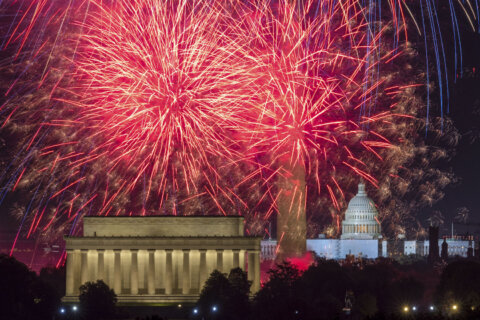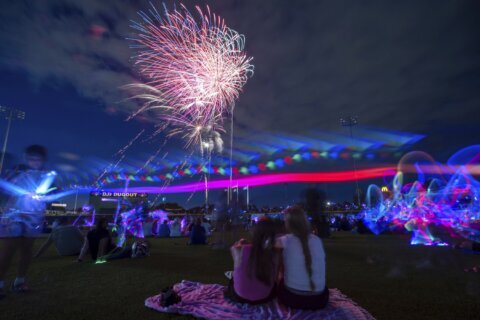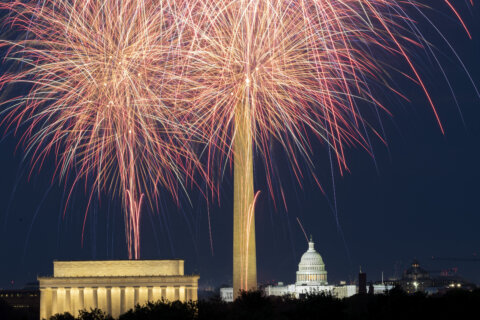“Sometimes there’s the misconception that, ‘Oh, I’m not putting the firework in my child’s hand so I can just go ahead and use it safely,'” said Dr. Sarah Ash Combs, an attending physician and the director of outreach at the Emergency Department at Children’s National Hospital. “Using them in the backyard when there’s any child around just isn’t safe.”
More Fourth of July news
- FAQ: What you need to know about celebrating July Fourth on the National Mall
- Where to watch fireworks in the DC area this Fourth of July
- Alfonso Ribeiro can’t wait to chill with Elmo at ‘A Capitol Fourth’
- Pets hate fireworks? DC-area veterinarian offers some tips on helping furry friends enjoy July Fourth
Combs said more than half the time, these accidents happen despite the fact that there’s adequate adult supervision — someone over the age of 18, sober and paying attention — while they’re being used.
“Because of how hot they are and the speed of injury, parental supervision is not enough,” she said.
Most of the time, kids are injured by sparklers, which can ignite up to 2,000 degrees Fahrenheit, making it easy to light up a child’s clothing.
“You wouldn’t give your child a blowtorch to run around your house with, you shouldn’t be giving them sparklers either,” said Alexander Hoehn-Saric, the chair of the Consumer Product Safety Commission (CPSC).
A demonstration hosted by Children’s National Hospital and the CPSC showed how other firecrackers, like M80s, cherry bombs and mortars can also be deadly.
In fact, the CPSC used mannequins to demonstrate fatal accidents that took place last year, such as when a child was launching a mortar above their head, only to have the shell drop down and slam into their skull.
Another re-enactment involved a man who lit a mortar in a tube, but thought it was a dud because it didn’t go off right away. It eventually went off right as he was looking down into it.
“At least 11 people died from fireworks, the ages ranging from 11 to 43” last year, said Hoehn-Saric. “Additionally there were 10,000-plus emergency room visits as a result of fireworks injuries. And these injuries and deaths don’t happen just on the Fourth of July,” but also include the two weeks before and after the holiday.
He stressed that adults using legal, consumer-grade fireworks should also keep water on hand to help douse the spent explosives.
Meanwhile, Combs also outlined what you should do if someone gets burned by a firework. Start by getting rid of any clothing or other items that can catch fire.
“If you have access to cool, not freezing cold, running water, even a water bottle with you, run that under… for three to five minutes,” said Combs. “Then finally cover it with a clean, dry dressing. No ointments. No butter. No lotions, no potions. And get yourself to medical attention.”
If something is lodged into a child’s eye, leave it in there and get them to the ER. Combs stressed you don’t want to remove it on your own.








